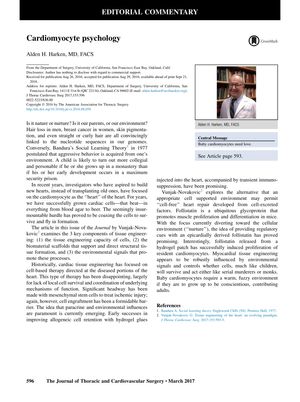Cardiomyocyte Psychology: Challenges and Advancements in Cardiac Tissue Engineering

TLDR Creating a supportive environment is crucial for repairing heart tissue without using actual heart cells.
The document discusses the challenges and recent advancements in cardiac tissue engineering, particularly focusing on the nurturing environment required for cardiomyocytes (heart cells) to survive and function properly. It highlights the historical emphasis on cell-based therapy for diseased heart parts, which has been largely unsuccessful due to poor cell survival and integration. Recent progress has been made using mesenchymal stem cells for treating ischemic injury, but cell engraftment remains a significant obstacle. The article by Vunjak-Novakovic explores the importance of paracrine and environmental factors in heart repair, suggesting that a supportive environment might allow for "cell-free" repair through cell-excreted factors. One promising approach mentioned is the use of follistatin, a glycoprotein that encourages muscle proliferation and differentiation, which has been shown to induce cardiomyocyte proliferation when released from a hydrogel patch. The overall message is that the environment, or "nurture," plays a critical role in the success of myocardial tissue engineering, much like the development of children is influenced by their surroundings.